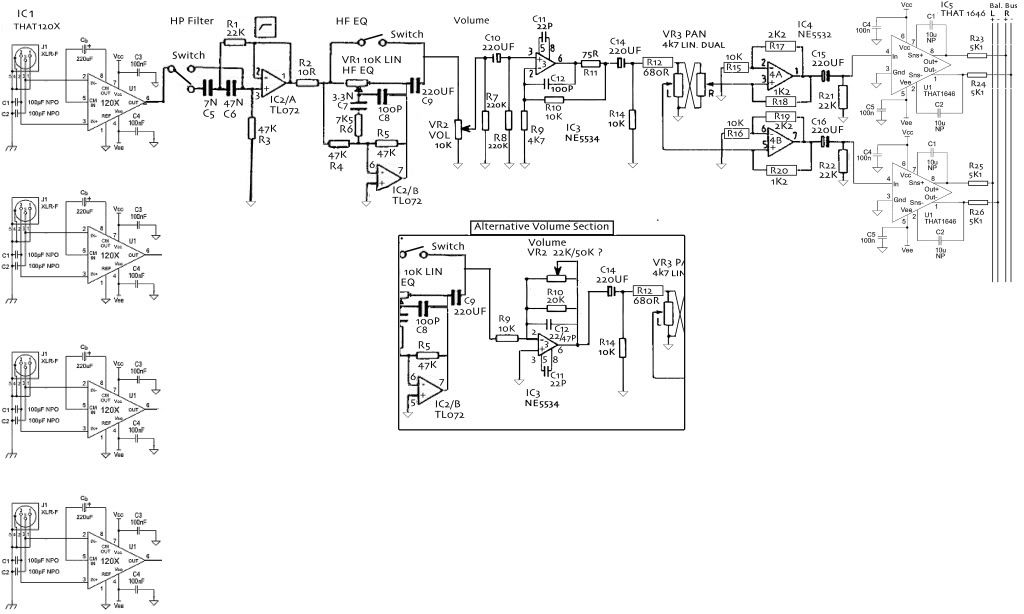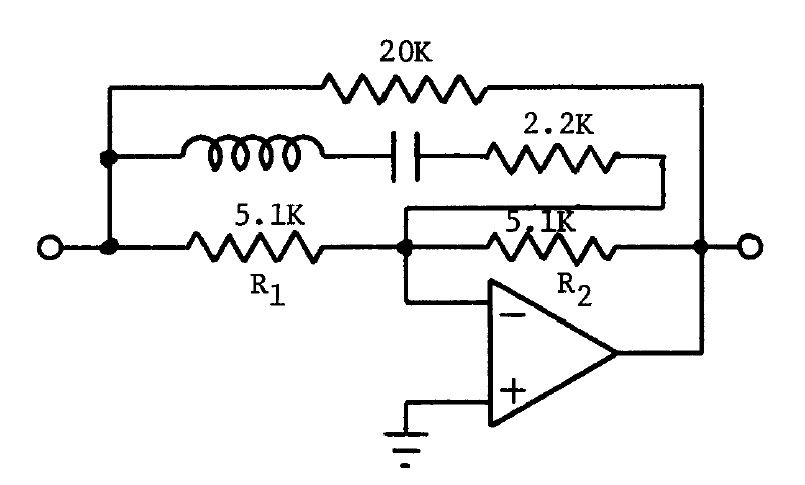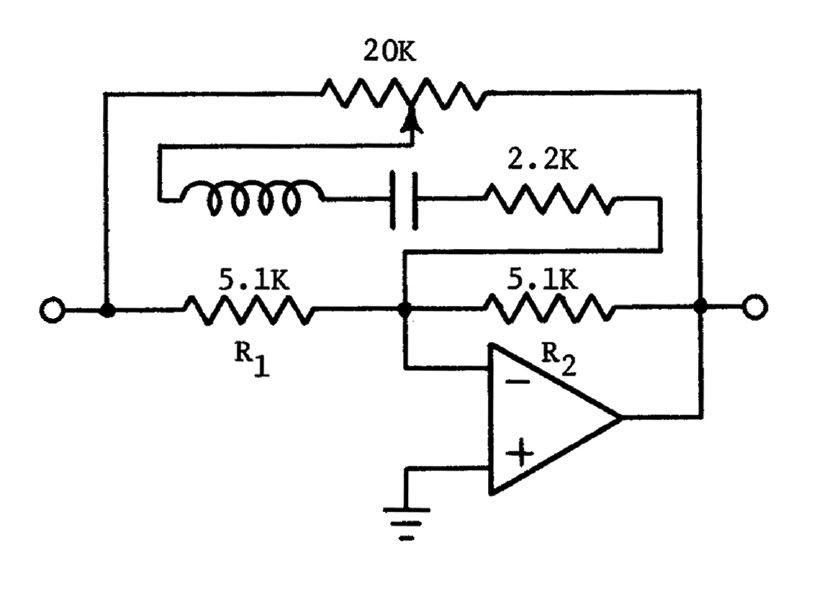First of all, this forum is really a great source for gaining quality knowledge, especially when it comes to the usage of the THAT chips. So I’m here.
I have the plan to expand my Soundcraft Console by adding 16 additional Line Inputs and need a bit of guidance.
Each channel should have a Highpass Filter and a HF EQ ( for being able to ad some ‘air’ to the audio)
The 16 extra channels should have an own ballanced bus and are not connected to the console Mix-Bus. The 16 ch. bus feeds a Neumann V-475 Summing card. The balanced outputs from the V-475 card will feed internally the balanced Tape Input from the Soundcraft. From there I would be able to blend the audio into the mixers master section signal.
Just to have a starting point for a breadboard test channel, here is my idea. Each channel section is influenced by existing designs.
Any opinions and advise is very welcome
Many thanks in advance
Notes/Questions:
- C5 is 47NF and not 7NF
- I can probably drop C9
- I’m not sure about the values of R21, R22
- The values of R23 to R26 are 5.1K because the V-475 is asking for those.
- I’m not sure about the circuit for the ‘Volume Section, see ‘Alternative Volume Section’

Here is the direct link:
http://i29.photobucket.com/albums/c269/ ... Input5.jpg
The schematic in better quality also downloadable (photobucket degrades my upload a bit)
http://www.mediafire.com/download.php?yo7lolakn3trp2x

